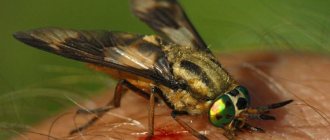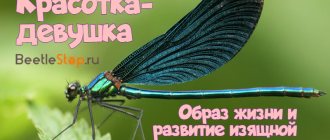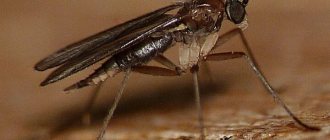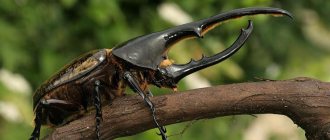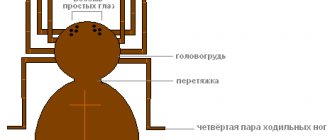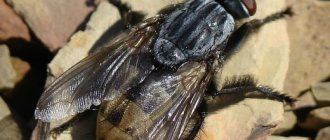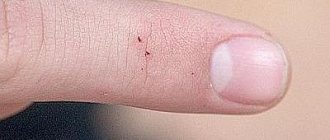The centipede is a predatory arthropod belonging to the class Chilopoda of the subphylum Myriapoda. It also includes centipedes and other creatures with many legs. They are elongated metameric creatures with one pair of legs per body segment.
Most centipedes are venomous and can inflict a painful bite by injecting venom through a pincer-like appendage. Despite the name, they can have a different number of legs - from 30 to 354. But there is always an odd number of them. No centipede has exactly 40 legs. Like spiders and scorpions, they are primarily carnivorous.
They have an odd number of pairs of legs. The number of body segments ranges from 27 to 191, but is never even.
The size varies from a few millimeters in lithobiomorphs and geophilomorphs to 30 cm in the largest centipedes. Centipedes live in a wide variety of environments. They are usually dull in color, combining shades of brown and red.
Cavernous (cave-dwelling) and underground species lack pigmentation. Many tropical centipedes have bright aposectic colors.
There are about 8,000 species worldwide, of which 3,000 are described. They have a wide geographical range and are found in the Arctic Circle. Found in a variety of terrestrial habitats from tropical forests to deserts.
They love moist microenvironments because they do not have the waxy cuticle of insects and arachnids. Its absence causes you to quickly lose water. They can be found in soil, fallen leaves, under rocks, and inside logs. Centipedes are among the largest terrestrial invertebrate predators.
What they look like
The body consists of six head segments (three of which are oral), a pair of poisonous jaws, a number of leg segments with a body, and two genital segments. The heads have two antennae and varying numbers of paired compound eyes (called ocelli). Some cave species are blind.
The first pair of limbs extends forward from the body to cover the remainder of the mouth. These limbs, or jaws, end in sharp claws and contain venom glands that help the animal kill or paralyze prey.
Each stalked segment consists of an upper and lower shield, covered by a cuticle and separated from the next segment by a flexible membrane. Centipedes periodically shed their cuticle, which allows them to grow. Body length ranges from 4 to 300 millimeters, with most species measuring 10–100 mm.
Vision, hearing
The eyes can only distinguish between light and darkness and have no true vision. In some species, the first pair of legs at the head end act as sensory organs similar to antennae, but unlike the whiskers of most other animals, they are directed backwards.
The unusual sensory organs are located at the base of the whiskers and consist of a disc-shaped structure surrounded by sensory cells. They are used to sense vibrations and may even provide hearing.
Teeth
The serrations are a unique feature found only in centipedes and no other arthropods. They are modifications of the first pair of legs, forming a pincer-like appendage behind the head.
The teeth are not true mouthparts, although they are used to capture prey, inject venom, and hold onto captured prey. Venom glands extend through the tube almost to the tip of each head.
Body
The body consists of 15 or more segments. Most have one pair of legs, with the jaws projecting forward from the first body segment. The last two segments are small and legless. Each pair of legs is slightly longer than the pair directly in front of it, ensuring that they do not overlap.
This reduces the likelihood of them colliding with each other when moving quickly. In extreme cases, the last pair of legs may be twice as long as the first. The last segment has a telson and includes the openings of the reproductive organs.
They use antennae to search for prey. The digestive tract forms a simple tube with digestive glands attached to parts of the mouth. Like insects, centipedes breathe through a tracheal system, usually with one opening or spiracle on each body segment. They excrete waste through one pair of Malpighian tubules.
Learn More Nematodes - Tiny Parasites Help or Hurt Your Garden
Scolopendra gigantea, also known as the giant scolopendra , is the largest existing species in the world, exceeding 30 cm in length. They are known to eat lizards, frogs, birds, even bats, catching them in flight, also rodents, spiders.
Area
There are more than 550 species of centipedes. Most of them live in tropical and subtropical areas. The most famous representatives of the species are as follows.
- A giant centipede that lives in South America and the Antilles. This is the largest (up to 26 cm in length) and poisonous of all representatives of the species. Contrary to popular belief, the bite of a giant centipede is not fatal to an adult.
- The ringed centipede lives in the Mediterranean, Central Asia, Southern Europe and Transcaucasia.
- Scolopendra Lucas lives in southern Europe. Has a heart-shaped head.
- The California centipede, which has settled in southern North America and Mexico, leads a predominantly diurnal lifestyle. It is capable of causing rhabdomyolysis when biting a person - destruction of muscle cells and acute renal failure.
- The Vietnamese centipede lives in Asia and Australia. Its size is up to 20 centimeters. When bitten, it releases a phosphorus-containing poison that causes severe skin burns.
- The red Chinese centipede lives in eastern China and Australia. This is the most “social” centipede, which does not shy away from living with relatives. Used for medical purposes.
- Found in Thailand and Vietnam, Scolopendra Falls is a twenty-centimeter amphibious centipede-waterfowl.
In addition, there are the Indian tiger and the Sumatran blue centipede, named after their habitat.
Scolopendra in Russia
There are two types of millipedes found on the territory of the Russian Federation: ring (Crimean) and Asian.
Scolopendra ringed is found in southern Russia, on the Black Sea coast, in the Caucasus and Central Asia. This is a heat-loving animal that does not tolerate frost well. It has a reddish color and reaches a length of 10-15 centimeters. With the help of ten pairs of legs, it reaches speeds of up to 40 cm/s. The lifespan of the ringed scolopendra can reach seven years. They reproduce by parthenogenesis. They are especially aggressive while expecting offspring. The ringed centipede's venom cannot kill an adult. However, a fatal outcome cannot be ruled out if an allergic reaction occurs, accompanied by anaphylactic shock.
In the Primorsky Territory there are single individuals of the Asian scolopendra, which are widespread in more southern regions. This centipede is up to 20 centimeters in length. The only known case of death was when she was bitten by a person.
The flycatcher, a predatory centipede that is often confused with the centipede, also lives in Crimea and on the Black Sea coast. Visit a person's house often. Its prey is flies, butterflies, and ants. For humans, it is practically harmless, since the jaws cannot bite the skin. Unlike the scolopendra, it can hunt during the day and is better adapted to cooler temperatures.
Life cycle
Centipede reproduction does not involve copulation. Males deposit a spermatophore for the female. It is deposited in the web, and the male performs a mating dance to entice the female to absorb his sperm. Or, males simply leave the product for the female to find it herself. In temperate areas, egg laying occurs in spring and summer; in subtropical and tropical areas, there is a slight seasonality.
Lithobiomorpha and Scutigeromorpha lay their eggs one at a time in the soil and leave them behind. The number of eggs laid ranges from 10 to 50. The development time of the embryo until hatching varies, and can take from one to several months.
The timing of development to the reproductive period varies within and among species. For example, S. coleoptrata takes 3 years to reach maturity. Under the right conditions, lithobiomorph species can reach reproductive stage in 1 year. In addition, centipedes are long-lived compared to other insects.
For example, the European Lithobius forficatus lives from 5 to 6 years, Scolopendra subspinipes can live more than 10 years.
Geophilomorpha and scolopendra females show greater parental care. Eggs, ranging from 15 to 60, are laid in a nest, soil, or rotten wood. The female stays with the eggs, guarding and licking them to protect them from fungi.
In some species, it stays with the young after they hatch, guarding them until they are ready to leave. In case of danger, the female either leaves the eggs or eats them. Some species of centipedes are matrifagic - the offspring eat their mother.
Fighting methods
Still, let’s turn to the problem that has arisen - where centipedes get into the home. The original habitat of the scolopendra is the street. In multi-storey buildings, it can penetrate into the apartment from the basement. In a private home, the centipede moves out of the yard.
Based on the fact that scolopendra settles in damp places, in houses it can be seen in the kitchen and bathtub. Animals do not move in large numbers. Therefore, if they have already appeared, then there may be several of them, or even in one copy.
Scolopendra loves humidity, so you can encounter it in the bathroom, toilet, or in the kitchen near the sink.
Fighting insects is not very easy due to the shell coating. In addition, direct means of extermination do not exist with this animal.
If you try to kill it with a fly swatter or newspaper, it will be a difficult task. The shell protects her from blows. You can kill an insect using a sharp object and an accurate hit. It’s easier to take the centipede out of the apartment. But you should not take it with your bare hands; you must have protective equipment - gloves.
Other methods are also used to destroy flycatchers:
- Chemicals, as well as various types of aerosols. The centipede does not die immediately. It will take up to 15 minutes for loss of vital functions to occur.
- Sticky traps. They are installed in places that are difficult to reach.
- Remove other insects. After all, scolopendra feeds on ants, cockroaches, and fleas.
- Seal cracks and cracks around the apartment.
The main factor preventing the appearance of centipedes is the elimination of moisture. Dryness is the first enemy of scolopendra. This point should be taken into account initially, even when building a house.
Traditional methods do not help to kill insects. To avoid millipedes from entering your home, it is necessary to keep clean and tidy not only in the room, but also around it. There should be no trash in the yard.
https://youtube.com/watch?v=YNWhej_5Ai4
Anamorphy and epimorphy
Centipedes grow legs at different points in their development. In Lithobiomorpha, Scutigeromorpha, Craterostigmomorpha, development is anamorphic: more pairs of legs grow between molts.
For example, Scutigera coleoptrata, a flycatcher with only four pairs of legs and sequential molts. Life stages with fewer than 15 pairs of legs are called larval stages (about five stages).
Craterostigmomorpha has only one anamorphosis phase, with embryos having 12 pairs and 15 molts.
Epimorpha, consisting of the orders Geophilomorpha, Scolopendromorpha, exhibits epimorphy: all pairs of legs are developed in the embryonic stage. The offspring no longer develop legs between moults. These are the longest centipedes.
The maximum number of thoracic segments varies, often geographically. Females have more legs than males.
The number of support segments varies from 15 to 191. However, they are always added in pairs, so the total number is always odd.
Danger to people
Some species of centipedes are dangerous to humans. A centipede bite on an adult is usually very painful and can cause severe swelling, chills, fever, and weakness. But it is unlikely to be fatal. Dangerous for small children and people allergic to bee stings.
In such people, the poisonous bite of large centipedes can cause anaphylactic shock. Smaller individuals are not capable of piercing human skin.
Even non-venomous species are considered frightening due to their dozens of legs moving at the same time and their rapid emergence from the darkness.
A 19th-century Tibetan poet warned fellow Buddhists: “If you enjoy frightening others, you will be reborn as a centipede.”
Are flycatchers harmful?
The flycatcher is a useful creature that exterminates many insect pests. She is a real helper in the garden and vegetable garden. Therefore, if a flycatcher is found in the house during the warm season, it is better to carefully catch it with a jar or box (not with your hands!) and take it outside.
In the apartment, she does not damage the furniture and does not touch human food. She is only interested in insects, and in a few weeks she can clean an apartment of them no worse than a vacuum cleaner.
The flycatcher does not tolerate any diseases, does not attack humans or animals, and generally tries to stay away from all household members. Despite the fact that the insect is poisonous, its disposition is peaceful. If possible, she will not enter into conflict - she will simply run away. Of course, she can try to bite, but only in self-defense.
In southern countries, centipedes are welcome guests in gardens and fields; here they are protected and their contribution to the fight against agricultural pests is appreciated.
Centipede bite
A centipede bite is traumatic. Sting-like appendages pierce the skin and inject venom into the wound. Strictly speaking, such a wound is not a bite, since the appendages represent a modified first pair of legs, and not real mouthparts.
Clinically, it is seen as a skin disorder characterized by paired hemorrhagic marks that form a chevron shape caused by paired ossicles.
Centipede venom causes pain and swelling in the bite area and other reactions throughout the body. Most bites are not life-threatening, but pose the greatest risk to children and those who develop allergic reactions.
Find out more Why the bite site itches after leeches
Symptoms
The story of the centipede bite is quite simple. The victim usually sees and recognizes the insect before or shortly after the bite.
Symptoms that most often develop:
- severe pain, which is usually proportional to the size of the insect;
- swelling, redness;
- skin necrosis;
- local bleeding;
- swollen, painful lymph nodes in the area of the bitten limb;
- headache;
- rapid heartbeat, rapid pulse;
- nausea, vomiting;
- local itching, burning.
The pain caused by a centipede bite has been described as comparable to that of scorpions and snake bites. However, unlike scorpions and snakes, where some are more poisonous than others, the toxicity of centipede venom is uniform across all species.
Therefore, the amount and intensity of pain correlates with the size of the insect. Large scolopendras have large projections that can inject venom deeper into the skin.
The wound is accompanied by swelling, redness, and small puncture wounds that may form a circle. The injury is susceptible to local ulceration and necrosis.
A severe bite from larger species can cause life-threatening anaphylaxis if left untreated. Infections may also occur.
Treatment
First aid consists of washing the bite site with cold water. If it doesn't hurt too much, apply ice. It constricts the blood vessels so the poison does not spread. Papain, an enzyme that breaks down protein, is also recommended.
Papain can be found in meat tenderizer and papaya. It deactivates most of the centipede venom proteins. Depending on the type of insect, treatment may not eliminate all the venom, leaving residual pain.
People bitten by centipedes are given a urine test to check for muscle tissue destruction and an ECG to check for heart and vascular problems.
Soothing and pain relief is achieved with the help of painkillers such as non-steroidal anti-inflammatory drugs, antihistamines, and anti-anxiety drugs. In severe cases, the affected limb is elevated and diuretics are prescribed.
General principles of wound care, sometimes antibiotics are used to prevent the wound from becoming infected or necrotic.
In Barbados, a folk remedy is to apply freshly cut onions to the site of injury.
Is scolopendra dangerous for humans?
This centipede is the primary actively poisonous “armed” animal. That is, it is capable of producing zootoxin in special glands and injecting it into the victim’s body using a wounding device. And although the centipede is not on the list of especially dangerous animals, the presence of stinging means indicates that it is a predator. The centipede is capable of using zootoxin for both attack and defense.
Scolopendra venom contains biologically active substances and proteolytic enzymes that cause local inflammation and act on nervous tissue cells. It includes:
- histamine;
- acetylcholine;
- serotonin;
- hyaluronidase;
- thermolysin.
Local symptoms of scolopendra bites occur under the influence of inflammatory mediators. And neurotransmitters influence the nervous system. Moreover, the influence of the poison has a dose-dependent effect. In practice, this means that small animals and insects with a small body weight suffer the most from a scolopendra bite. On them, the neurotoxic effect of the poison is manifested by adynamia, increased salivation, constriction of the pupil, fasciculation (twitching) of muscles, impaired breathing and coordination of movements, and paralysis.
The specificity of the action of zootoxins on humans is reflected in the International Classification of Diseases, Tenth Revision. The toxic effect resulting from contact with poisonous animals, including the bite of a scolopendra, is included in ICD-10 under code T63.4.
Centipede venom is dangerous for humans only if there is an individual intolerance to one or more substances included in its composition. Bites to the head and neck, in the area of blood vessels, are also dangerous. The risk group is young children. A fatal case has been described when a child was bitten in the head by an Asian centipede.
What do they eat
Centipedes are primarily generalist predators, meaning they have adapted to consuming a variety of available prey. Examination of the intestinal contents shows that plant material is an unimportant part of their diet. They feed on plant matter when they are hungry.
They are nocturnal insects. What centipedes actually eat is unknown due to their cryptic lifestyle and extensive chewing habits. Usually wraps itself around prey and waits for the poison to take effect before eating it.
Scolopendras, given their size, are able to feed on vertebrates. They have been observed eating reptiles, amphibians, small mammals, bats, and birds. Centipedes and spiders hunt each other.
Two species, Scolopendra cataracta and S. paradoxa, are known to be amphibians and prey on aquatic or amphibious invertebrates.
Many large animals prey on centipedes, such as mongooses, mice, salamanders, beetles, and snakes. They are the main food item of the African ant Amblyopone Pluto, the lake snake Aparallactus capensis.
The centipede's defenses are speed, poison, release of protective chemicals. The geophilomorph secretes sticky substances that generate toxic hydrogen cyanide and benzoic acid from microscopic glands on its underside. Similarly, lithobiomorphic centipedes secrete a sticky substance from the glands of the two rear pairs of legs.
Fluid regulation is an important aspect of life. They lose water quickly in dry conditions. The loss of water is a result of the fact that they do not have a waxy coating on the exoskeleton and release waste nitrogen in the form of ammonia, which requires additional water.
Habitats: forest, savannah, prairie, desert, and many others. Some are adapted to coastal habitats where they feed on shells. Species of all orders, with the exception of Craterostigmomorpha, have adapted to caves.
Find out more Common flycatcher: what it looks like, what it eats, danger to people
Appearance
This insect is considered ugly. But not everyone shares the opinion that he is unattractive. A scientist studying biological species may well remark admiringly: “What a magnificent specimen!” when examining a particularly large individual. And even beings of the opposite sex may find some of their fellow creatures quite attractive. On all others, the Crimean scolopendra makes a repulsive impression, which, however, does not upset her much. In the adult stage, it reaches ten and sometimes fifteen centimeters in length. Outwardly, it looks like a caterpillar, equipped with additional “options” in the form of many legs and threateningly protruding weapons. The coloring is militaristic, closest in shade to khaki, olive-brown or brownish, which, according to the gradation accepted in the world of insects, indicates a reluctance to enter into conflicts and a desire to sneak up secretly and then disappear.
Are they eaten?
As a food item in China, certain large-sized species are consumed, usually grilled or deep-fried. They can often be seen in the stalls of street vendors in large cities, in the Donghuamen and Wangfujing Beijing markets.
Also in China, Laos, Thailand, Cambodia, large centipedes are made into a tincture and dried. This custom is part of traditional Chinese medicine. It is believed that they have medicinal properties and give strength; liqueur with a centipede immersed in it is used as a special medicinal drink.
Difference from centipedes
The easiest way to distinguish a centipede from a centipede is this: centipedes have two pairs of legs on most body segments; centipedes always have one pair of legs per segment. Not sure what you found? Just count how many pairs of legs there are on the segment.
The number of legs changes throughout life
If a centipede finds itself in the clutches of a bird or other predator, it may escape by sacrificing several of its legs. The bird is left with a beak full of legs; the cunning insect quickly runs away on the remaining ones. Since they continue to shed throughout their lives, they quickly repair the damage.
If you find a centipede with several legs that are shorter than the others, it is likely recovering from a predator attack.
Consequences
Complications of a scolopendra bite may include:
- Secondary infection
- Necrosis (rare)
- Muscle breakdown – rhabdomyolysis, myoglobinuria and acute renal failure
- Possible coronary vasospasm and acute myocardial infarction
- Anaphylactic shock (Patients with a history of sensitivity to Hymenoptera venom may be at higher risk.)
https://medicalit.ru/wp-content/uploads/2016/09/sorokonozhka.jpg https://medicalit.ru/wp-content/uploads/2016/09/sorokonozhka-300Ч238.jpg2016-09-09T17: 56 : 04 + 00:00 admin Poisoning by snakes, insects, fishing About 3,500 species of centipedes are found in the class Chilopoda, such as arthropods. They are among the least studied arthropods. Millipedes have an elongated, multi-segmented body with one pair of legs on each body segment. They are widespread, present on every continent except Antarctica, and are especially common in warm and temperate tropical regions. Centipede. admin [email address] Online medical literature
Centipedes as pets
Most insects sold as pets are caught from the wild. The most commonly sold species are giant centipedes from the genus Scolopendra. Kept in terrariums with a large surface area, minimum 60 centimeters (24 inches).
Burial requires a built-in substrate of soil and coir. They are fed pre-killed crickets, cockroaches, and mealworms weekly or once every two weeks. A shallow dish of water is required.
Centipedes are aggressive, poisonous and potentially dangerous to people, especially children. Centipede bites cause skin damage, bruising, blistering, inflammation, and gangrene. The terrarium must be escape-proof.
Although they can't climb smooth glass or acrylic, don't let them climb up the lid. A minimum humidity of 70 percent is required, higher for tropical forest species. Adequate ventilation is provided by a lid with a grill and small holes on the side of the terrarium.
Make sure the holes are small so that the insect will not fit through them. Temperate species are kept at a temperature of 20 – 25 C (68–72 F), tropical species 25 – 28 C (77–82.4 F).
Don't worry if you don't see your pet during the day: centipedes are nocturnal creatures that hunt after dark.

